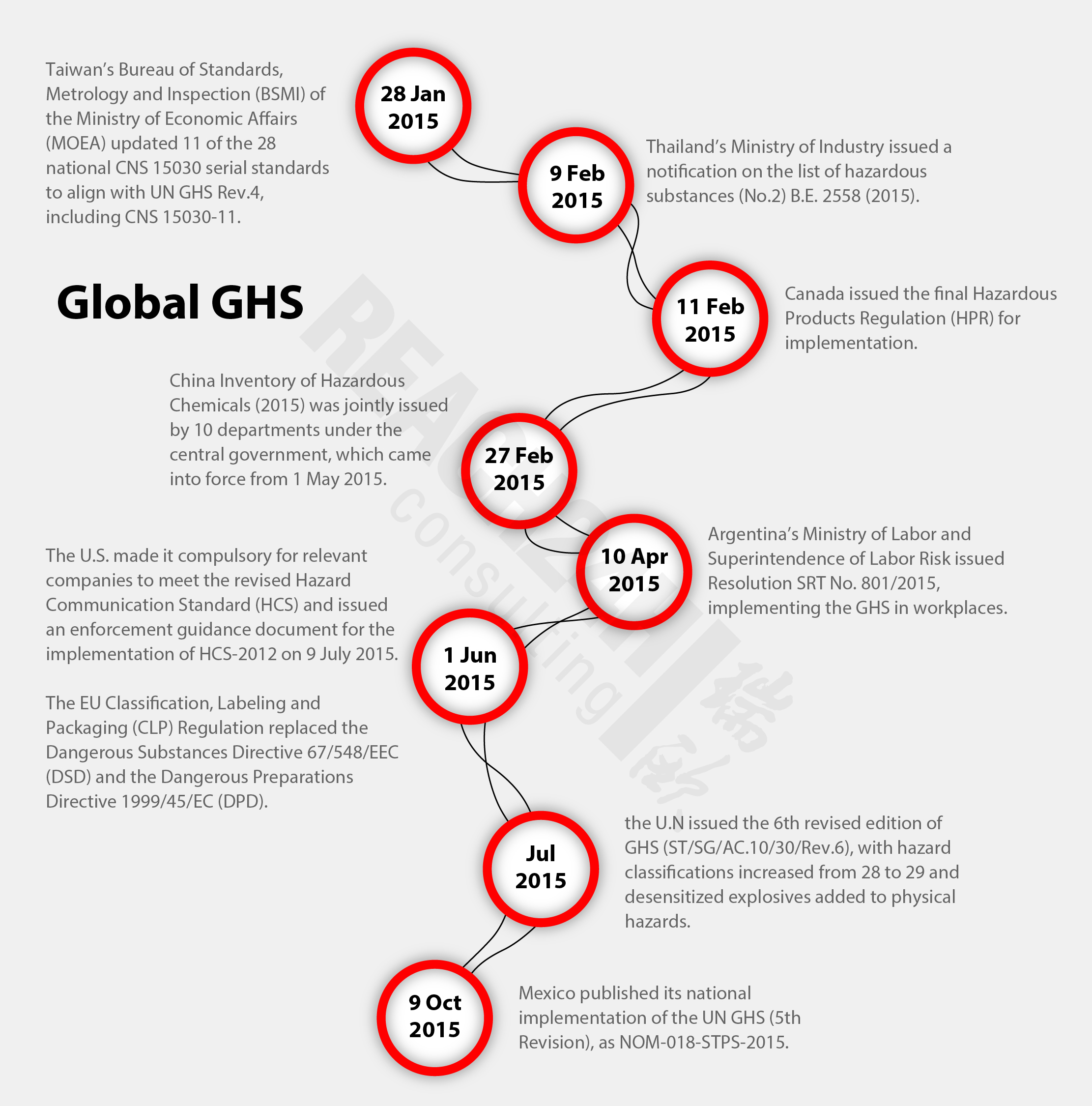2015 Global Regulatory Highlights – Global GHS
After the implementation of the UN GHS in 2003, many countries and regions worldwide followed suit. The year of 2015 witnessed a remarkable boom of GHS implementation worldwide. In the U.S., the revised Hazard Communication Standard (HCS) came into force on 1 June, 2015, requiring all the manufacturers, importers, distributors and end users in the supply chain to fulfill their due obligations for GHS compliance. In Canada, the final Hazardous Products Regulation (HPR) was issued on 11 February, 2015 and took effect from 1 June, 2015, demanding a full implementation of GHS in workplaces. In the EU, the Classification, Labeling and Packaging (CLP) Regulation became the only legislation to apply to the classification and labeling of both substances and mixtures from 1 June, 2015. Besides, the UN issued the 6th revised edition of GHS, with hazard classifications increased from 28 to 29 and desensitized explosives added to physical hazards.
At such a time of bidding farewell to the past while ushering in the new, REACH24H Consulting Group helps you connect the dots to grasp the highlights, well positioned to facilitate a comprehensive understanding of key developments of Global GHS in 2015.

Different countries and regions formulated diversified GHS regulations based on the UN GHS, building on previous experiences while featuring regional characteristics. Differences do exist among all the GHS regulations in different parts of the world, which may appear to be similar. A case in point is that the EU CLP defines 28 hazard classes while the U.S. HCS defines 26 ones. Also, the release of the latest edition of the UN GHS means that it will be a critical reference for the formulation or revision of GHS regulations by different countries and regions in the future. The GHS practices in different countries may encounter many changes in the upcoming one to two years, exerting much impact on global trade.
The fact that the Globally Harmonized System of Classification and Labeling of Chemical (GHS) is actually diversified when practiced in different countries and regions troubles many companies in their import and export activities of chemicals. REACH24H Consulting Group suggest that companies should have an in-depth understanding of these regulations and seek for compliance in the right direction.
Further Readings:
2015 Global Regulatory Highlights – EU REACH
2015 Global Regulatory Highlights – China Chemical Regulations
2015 Global Regulatory Highlights – South Korea Chemical Regulations
2015 Global Regulatory Highlights – Taiwan Chemical Regulations
2015 Global Regulatory Highlights – Japan Chemical Regulations
The year of 2015 saw a series of major regulatory changes, bringing both challenges and opportunities to the chemical industry. To tease out the key updates in Asia Pacific’s regulatory regime throughout the past year, ChemLinked has dedicated to prepare you an annual report “2015 Chemical Regulatory Review of the Asia Pacific Region”.
